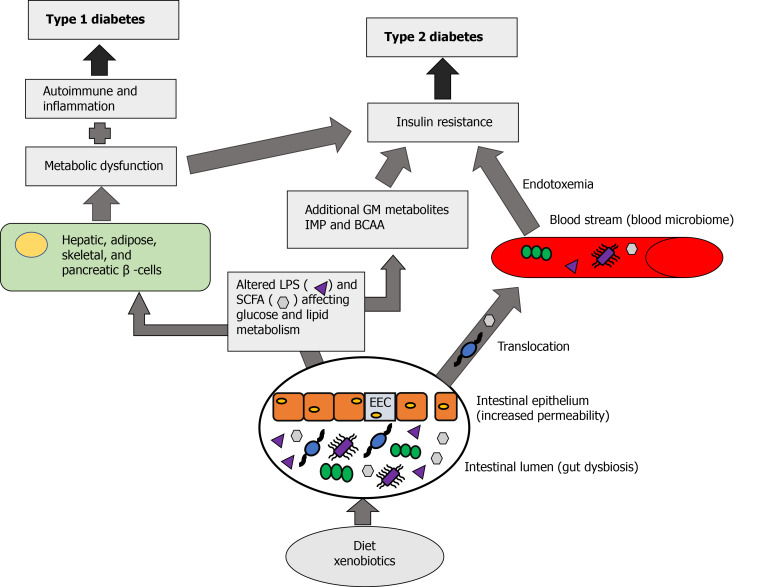Figure 1.
The role of gut dysbiosis in diabetes mellitus. The ingestion of a diet rich in carbohydrates and fats along with certain xenobiotics can lead to a disruption of the gut microbiome (dysbiosis). Under normal conditions, the gut bacteria produce metabolic products such as short chain fatty acids (SCFA) (Hexagons) that act locally and have a positive benefit on metabolism. Under conditions of dysbiosis there can be a disruption to the enteroendocrine cells and lead to gut permeability. This can lead to an increase in these metabolic products as well as bacterial translocation to the bloodstream, leading to endotoxemia resulting in metabolic dysfunction and insulin resistance contributing to type 2 diabetes. Gut dysbiosis also results in altered production of SCFA and release of lipopolysaccharides (LPS) (Triangles) and an increase production of other metabolites such as imidazole propionate and bacteria derived amino acids. These metabolites can act directly to affect insulin resistance. Excess SCFA and LPS can act on hepatic, skeletal, adipose, and pancreatic cells leading to metabolic dysfunction, altered inflammation and immune response which can influence insulin resistance. These factors can contribute to the development of type 1 and type 2 diabetes. SCFA: Short chain fatty acids; EEC: Enteroendocrine cells; LPS: Lipopolysaccharides; BCAA: Bacteria derived amino acids; IMP: Imidazole propionate; GM: Gut microbiota.

